We may earn money or products from the companies mentioned in this post. This means if you click on the link and purchase the item, I will receive a small commission at no extra cost to you … you’re just helping re-supply our family’s travel fund.
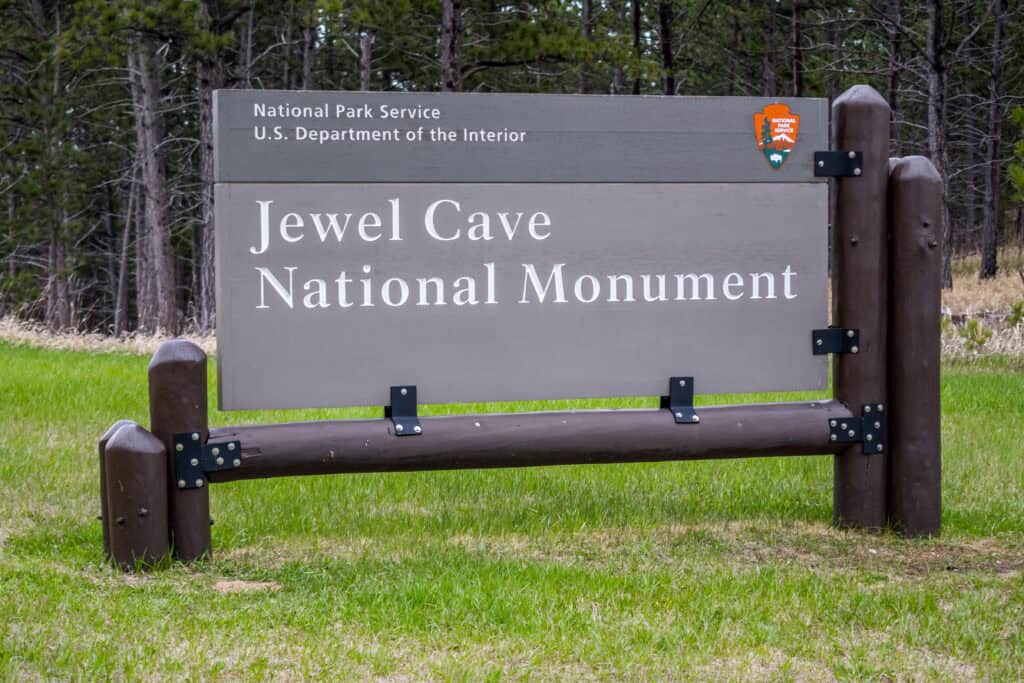
Under limestone plateaus and old lava fields, the country hides rooms of stone shaped by patient water and fire. Trails descend into chill air, lamps sharpen textures, and silence settles like a second ceiling. Park rangers set the tempo with permits, tour routes, and bat season closures. The best visits respect that rhythm. What follows is a circuit of caves made for learning as much as looking, where geology reads like a time ledger and the exit always returns to daylight.
Mammoth Cave, Kentucky
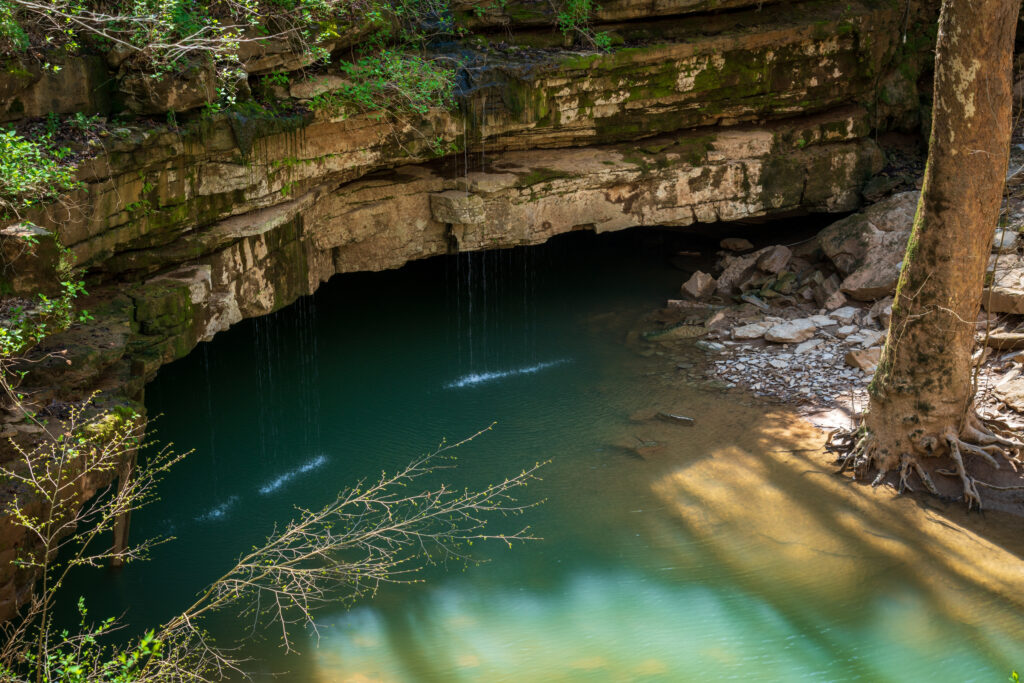
The world’s longest known cave threads beneath rolling hardwoods, its dry passages stacked like city blocks built from ancient seabed. Tours move from wide avenues to tight canyons of shale and limestone, explaining rivers that abandoned tunnels and left them walkable. Summer adds bats and cool reprieve; winter grants clearer air. Surface trails and the Green River complete the picture, showing how sinkholes sip rain and feed the giant labyrinth below.
Carlsbad Caverns, New Mexico
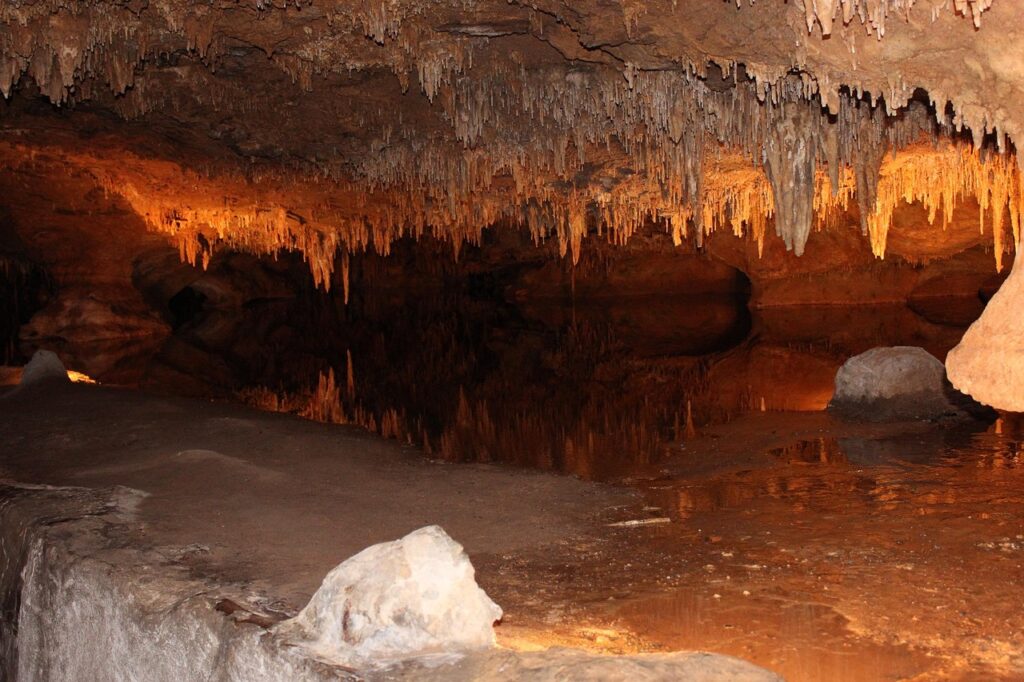
A natural entrance spirals into darkness where chambers bloom with calcite in improbable shapes. The Big Room opens like a stone cathedral, its floor a garden of stalagmites named by early explorers who ran out of adjectives. Elevators make the return easy, yet the walk preserves the drama layer by layer. In late summer evenings, hundreds of thousands of Brazilian free tailed bats pour from the cave mouth, turning the desert dusk into motion.
Wind Cave, South Dakota
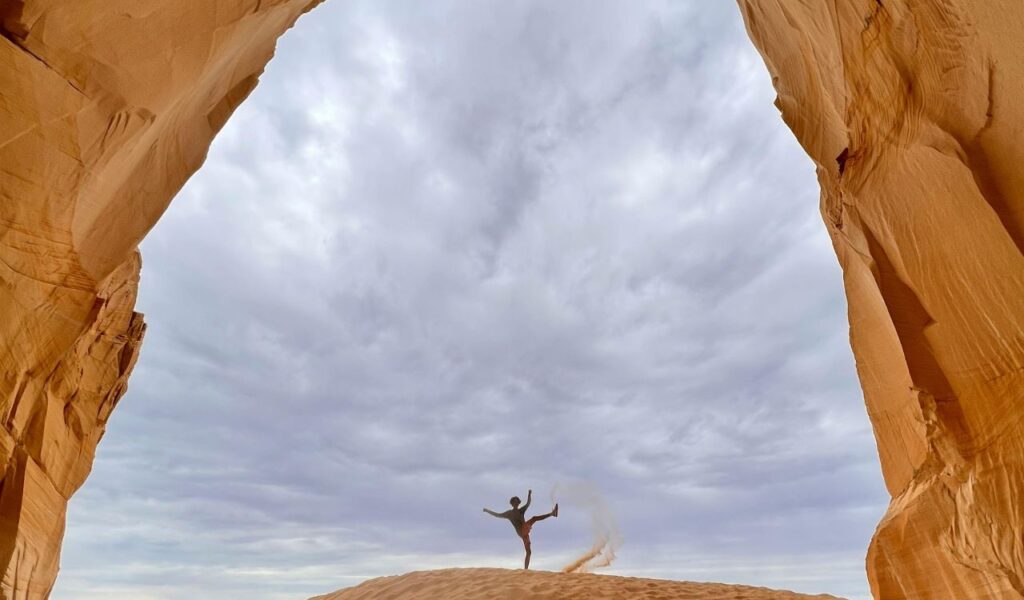
Beneath the Black Hills, this maze is famous for boxwork, a honeycomb of thin calcite fins rarely seen at this scale. Airflow still “breathes” at the entrance with weather shifts, a sign of complex passages locked in pressure games. Park tours thread past frostwork, low ceilings, and rooms that feel quietly engineered by time. Prairie and bison herds spread above, reminding visitors that cave and grassland belong to one working landscape.
Jewel Cave, South Dakota
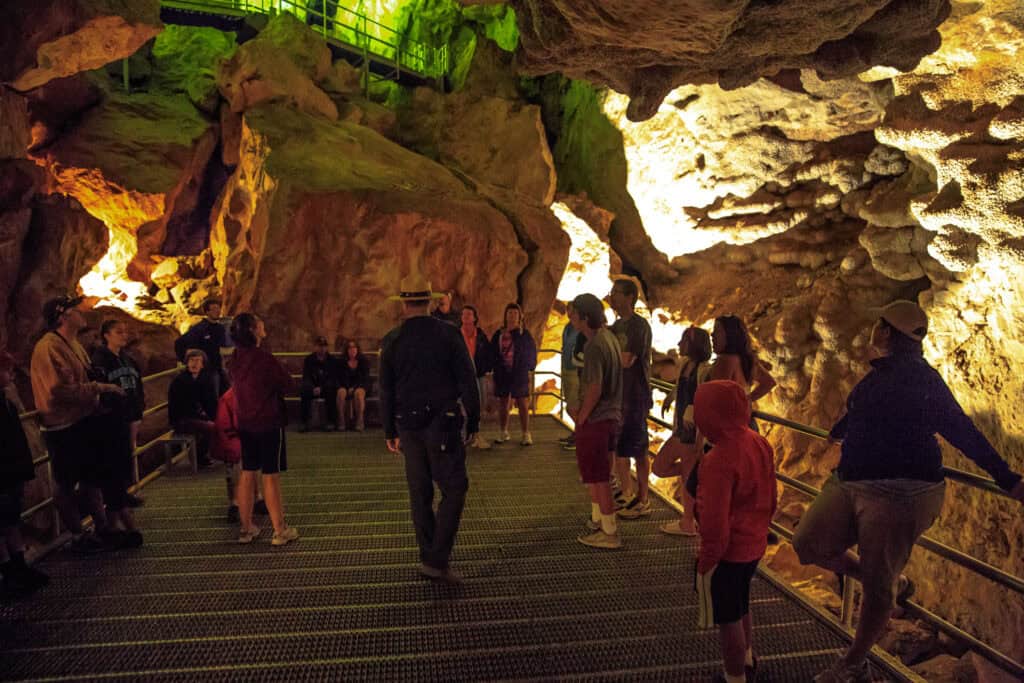
Close to Wind Cave yet distinct, Jewel Cave glitters with dogtooth spar and nailhead spar, crystal growths that light picks up like frost. The mapped mileage stretches for hundreds of miles, much of it tight, but public tours focus on dramatic rooms where formations crowd every ledge. Stairways and platforms keep the route steady while guides unpack how air, minerals, and patient drip built the spectacle. Pines and granite domes wait topside.
Luray Caverns, Virginia
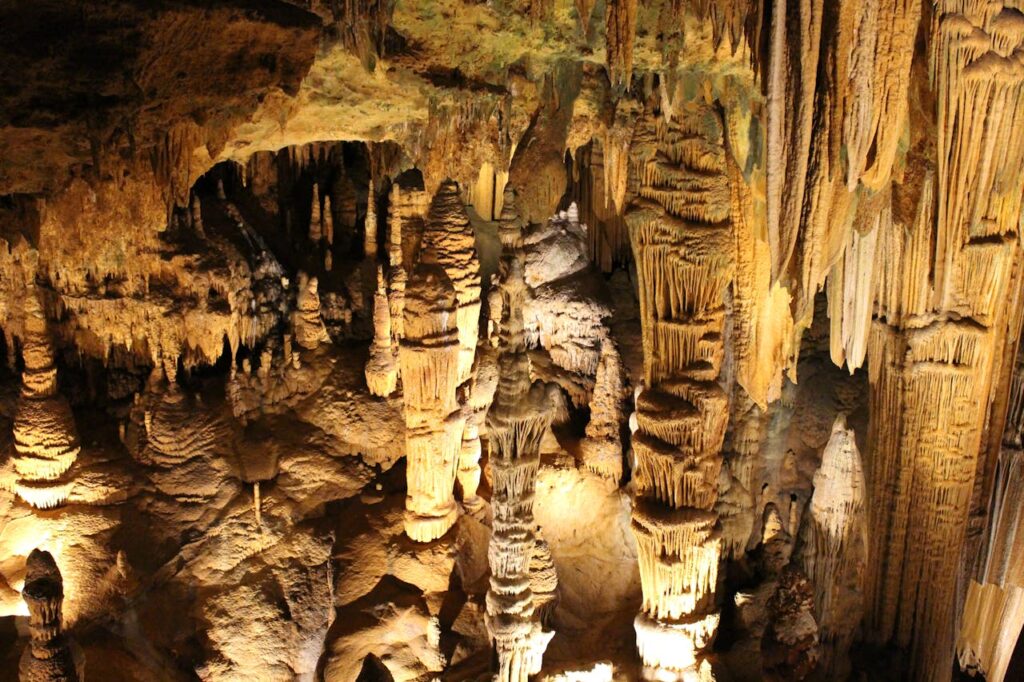
Shenandoah limestone hangs curtains and flows stone into columns inside Virginia’s most visited cave. Dream Lake mirrors stalactites so perfectly the reflection looks like a second universe. The “Stalacpipe Organ” taps tuned formations with soft mallets, turning the chamber into an instrument that hums more than sings. Outside, the valley’s farms and Skyline Drive make an easy pairing, but underground the temperature holds steady and the mood slows to match.
Kartchner Caverns, Arizona
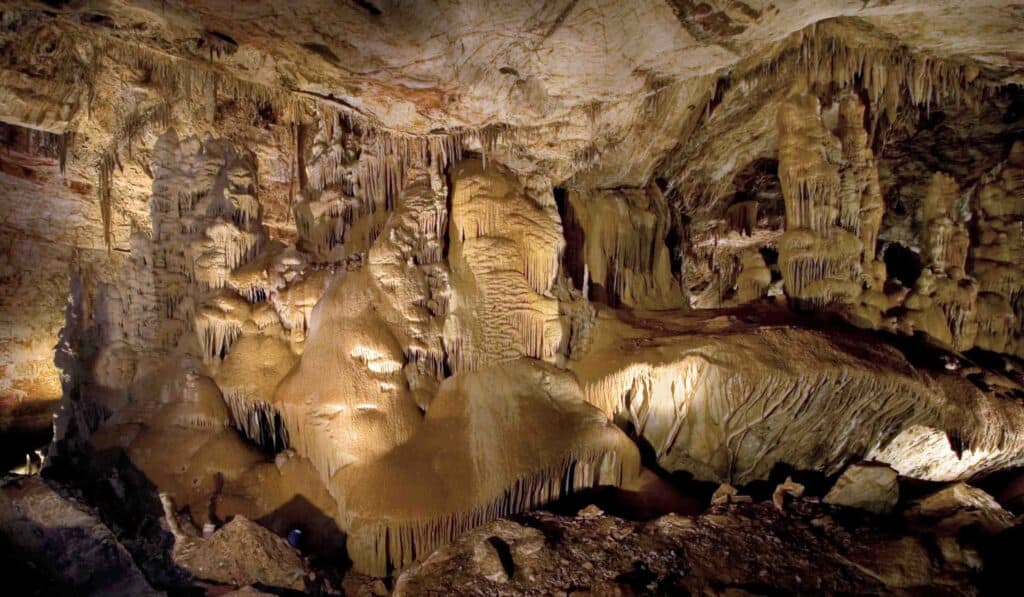
Discovered by cavers who kept the secret to protect delicate formations, this living cave still grows soda straws, shields, and helictites. Climate doors and strict protocols preserve humidity, so rooms feel soft and close, more like lungs than halls. Rangers frame the science without rushing the view, and summer monsoons above ground translate to subtle changes below. The story here is stewardship as much as spectacle, and both reward attention.
Oregon Caves, Oregon
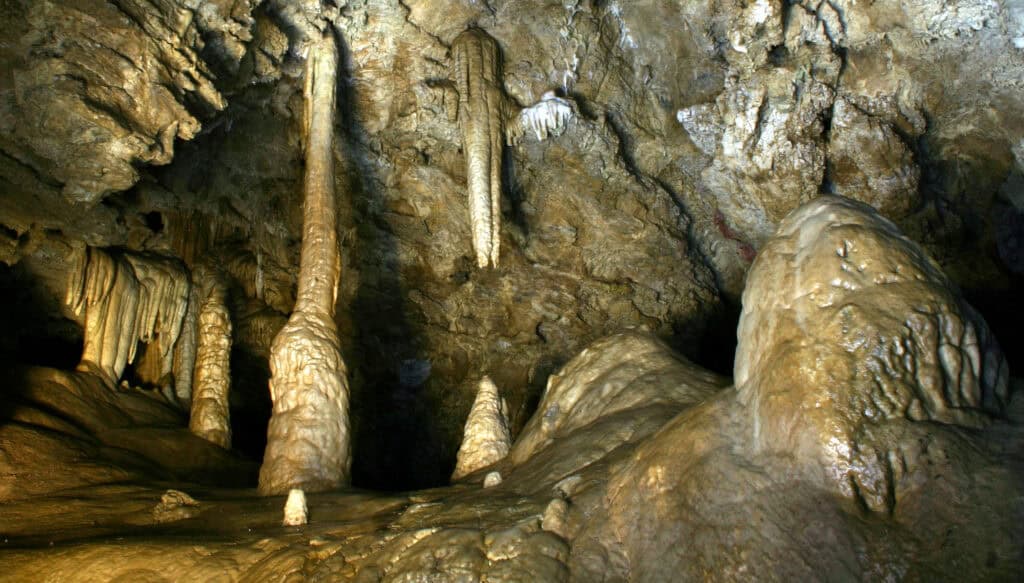
Tucked in Siskiyou marble, these passages hold nicknames from early guides and textures that change with every corner. The route climbs and dips through narrow squeezes and bright rooms, explaining how acidic water ate pathways through stone that began as ocean floor. Above ground, a historic chateau and forest trails stretch the visit into an easy weekend. Cougars and old growth stand as quiet neighbors to the cave’s cool breath.
Timpanogos Cave, Utah
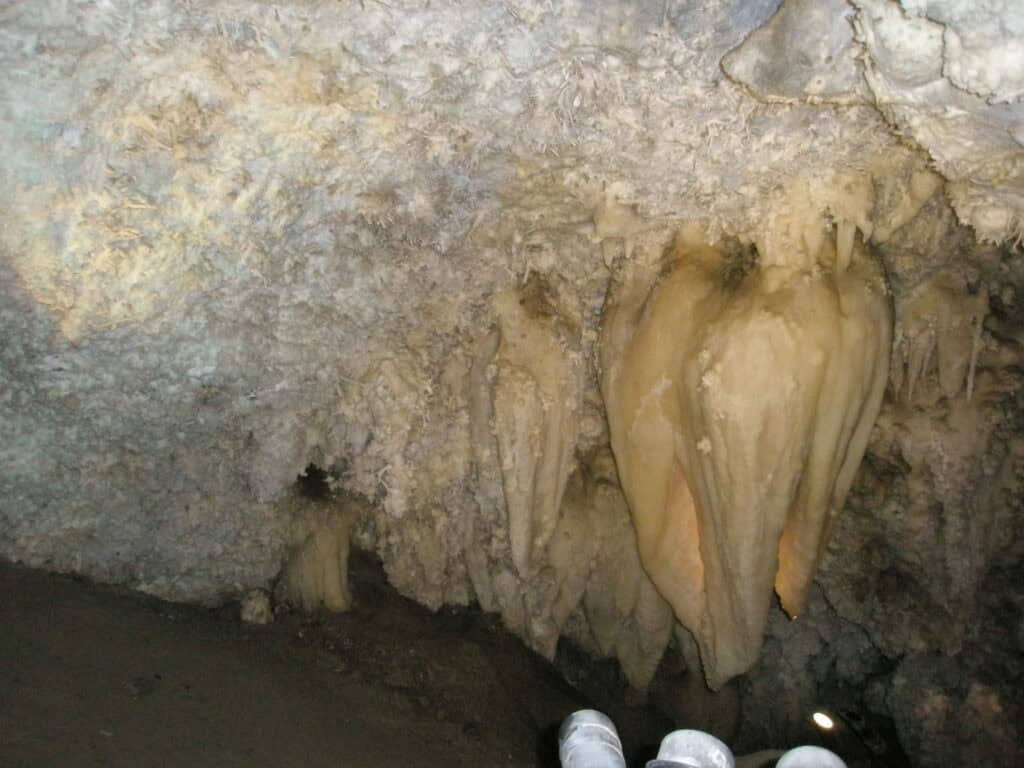
A steep trail up American Fork Canyon leads to linked caverns rich in colorful flowstone and slender helictites. The climb earns crisp views of Wasatch cliffs before the temperature drops at the entrance. Inside, rangers connect mineral stories to mountain uplift and fault lines that opened cracks for water to work. The trio of caves feels intimate, with chambers close enough to read the fine grain of calcite as lights sweep past.
Blanchard Springs Caverns, Arkansas
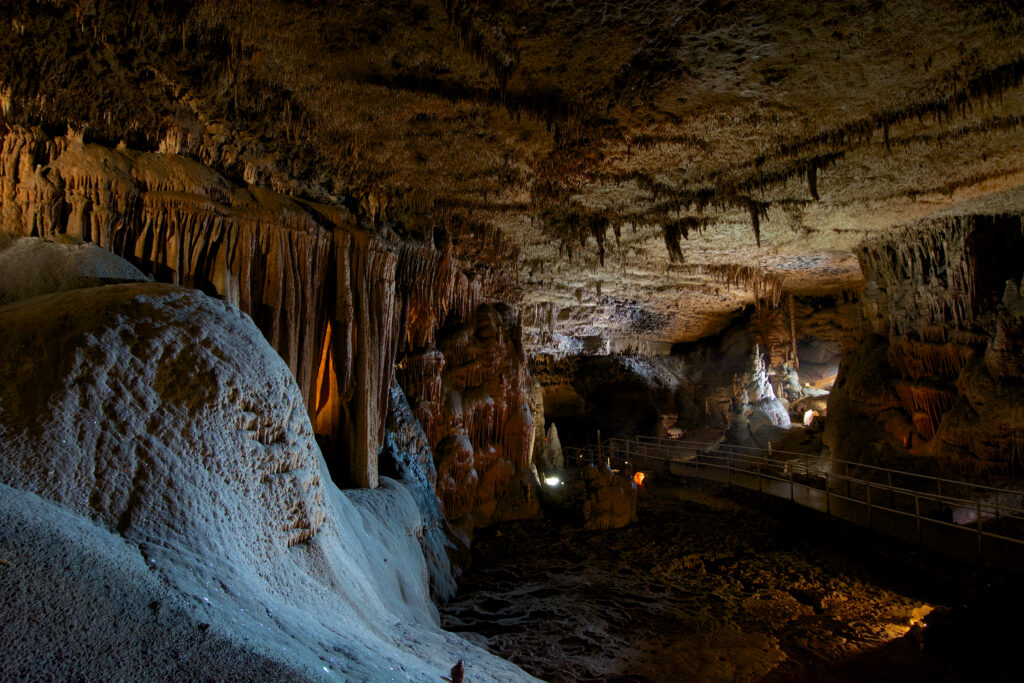
Ozark stone opens into living rooms of snow white flowstone, soda straws, and pools that collect fallen minerals grain by grain. Tours vary from paved loops to wilder crawls that show off ribbons and columns with minimal distance. A spring bursts from the hillside nearby, tying underground water to a surface cascade that keeps its own schedule. The cave’s humidity and warmth nurture formations in real time, a subtle, ongoing performance.
Natural Bridge Caverns, Texas
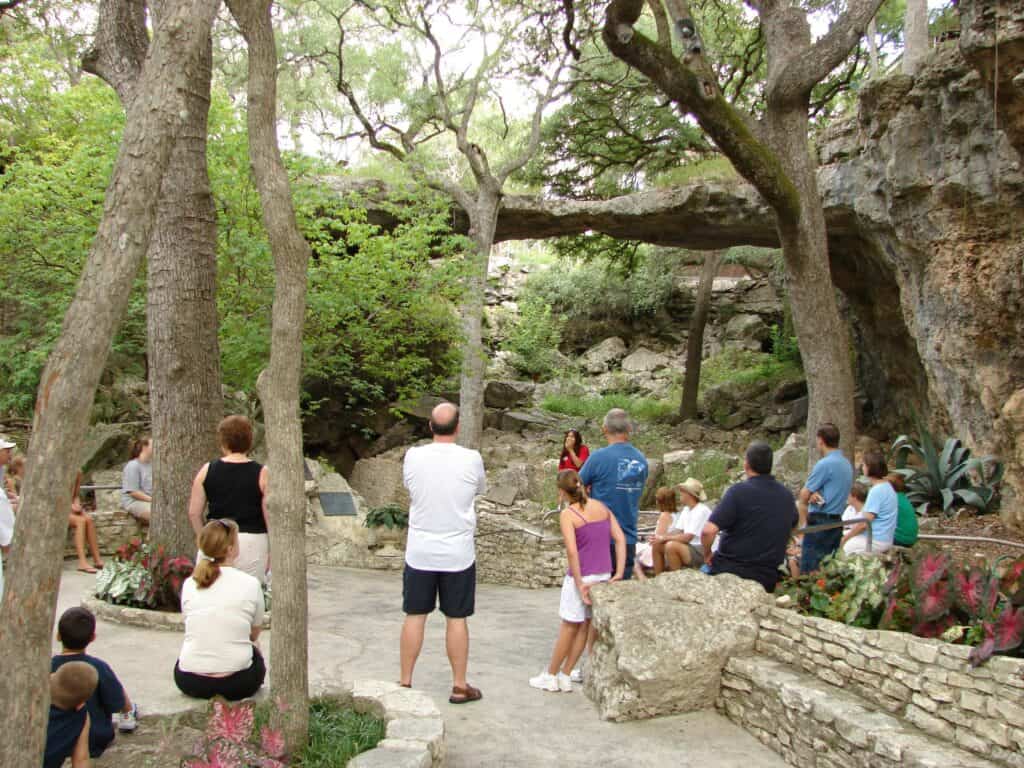
North of San Antonio, broad rooms descend past stalactites that look like melted chandeliers and domes painted in mineral washes. Bridges and ramps make the tour accessible while preserving the cave’s weighty silence. Adventure routes crawl and rappel into deeper sections where columns stand like sentries. At the surface, sinkholes and the namesake limestone arch explain how voids start and expand. The Hill Country sun returns fast, but the cool lingers in memory.
Other Blog Posts You Might Enjoy
www.idyllicpursuit.com (Article Sourced Website)
#Cave #Systems #America #Explore #Author #Kathy #Haan
